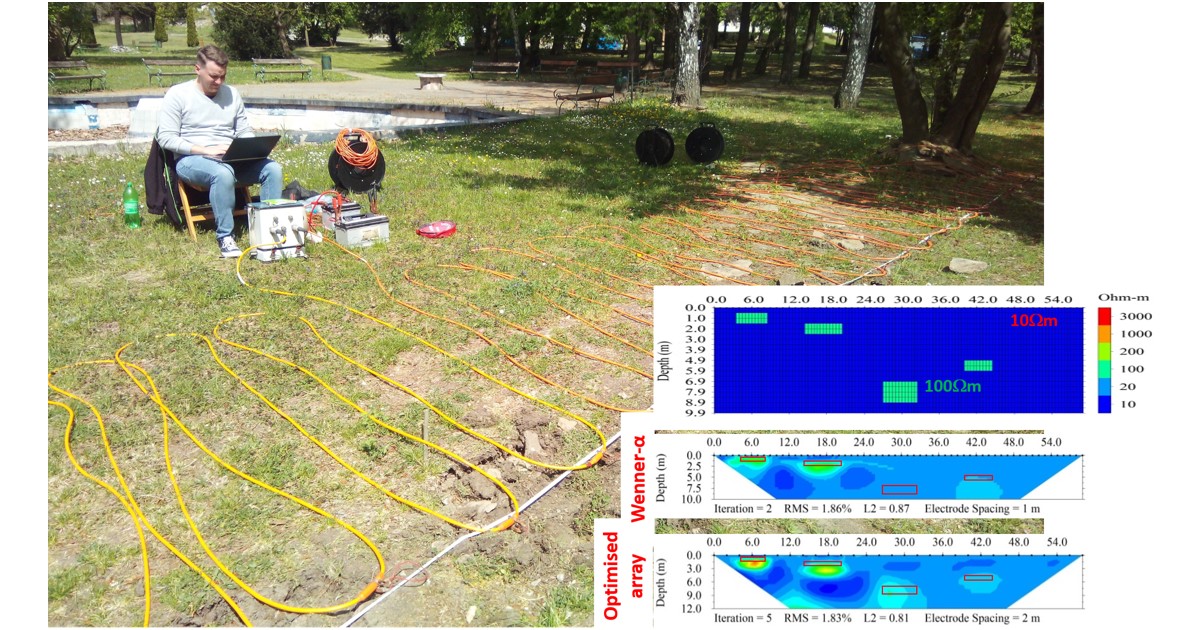Recent Developments in Geoelectrical Imaging Method
A special issue of Applied Sciences (ISSN 2076-3417). This special issue belongs to the section "Earth Sciences".
Deadline for manuscript submissions: closed (31 December 2022) | Viewed by 2678

Special Issue Editors
Interests: surface geoelectric arrays; quasi null arrays; depth of detection; resolution; imaging capability; karst; hydrology
Special Issue Information
Dear Colleagues,
We are inviting submissions to the Special Issue on “Recent Developments in the Geoelectrical Imaging Method”.
There have been major improvements in the geoelectrical imaging method in recent decades. In this Special Issue, we invite submissions exploring cutting-edge research and recent advances in the fields of improvements in instrumentation, field survey design, and data inversion techniques for the geoelectrical method in this period. Studies presenting the development of, e.g., new types of sensors; towed resistivity acquisition systems; and 2D, 2.5D, and 3D prospection and monitoring are highly welcome, as are comparisons of different geoelectric arrays in terms of their sensitivity, detection depth, resolution, imaging capability, including optimized array sets, etc. The sensitivity of different arrays to noises and their joint application, and their engineering, environmental, hydrological, and mining applications are also part of this Issue. Numerical and analogue modeling results and the different ways of inversion, including joint inversion, are also highly appreciated.
Both theoretical and experimental studies are welcome, as well as comprehensive review papers.
Prof. Dr. Sándor Szalai
Prof. Dr. Mohamed Metwaly
Guest Editors
Manuscript Submission Information
Manuscripts should be submitted online at www.mdpi.com by registering and logging in to this website. Once you are registered, click here to go to the submission form. Manuscripts can be submitted until the deadline. All submissions that pass pre-check are peer-reviewed. Accepted papers will be published continuously in the journal (as soon as accepted) and will be listed together on the special issue website. Research articles, review articles as well as short communications are invited. For planned papers, a title and short abstract (about 100 words) can be sent to the Editorial Office for announcement on this website.
Submitted manuscripts should not have been published previously, nor be under consideration for publication elsewhere (except conference proceedings papers). All manuscripts are thoroughly refereed through a single-blind peer-review process. A guide for authors and other relevant information for submission of manuscripts is available on the Instructions for Authors page. Applied Sciences is an international peer-reviewed open access semimonthly journal published by MDPI.
Please visit the Instructions for Authors page before submitting a manuscript. The Article Processing Charge (APC) for publication in this open access journal is 2400 CHF (Swiss Francs). Submitted papers should be well formatted and use good English. Authors may use MDPI's English editing service prior to publication or during author revisions.
Keywords
- technical development
- 2D, 2.5D and 3D measurements
- imaging capacity of different arrays
- optimization of array sets
- detection depth
- resolution
- sensitivity
- sensitivity to noises
- joint application of different arrays
- inversion
- numerical and analogue modeling
- applicability in other areas





